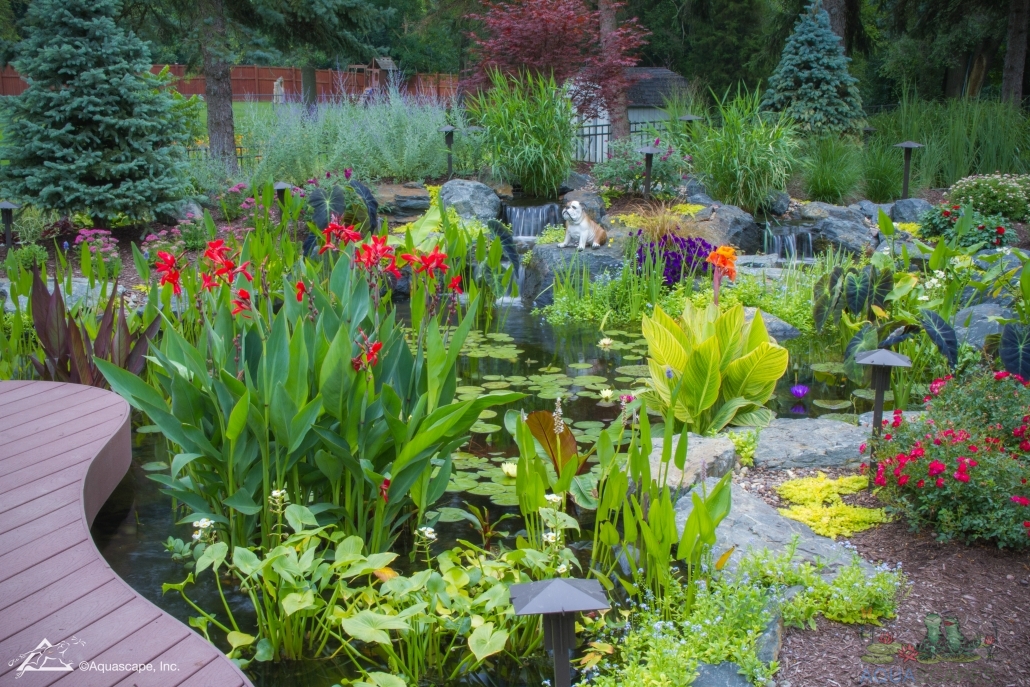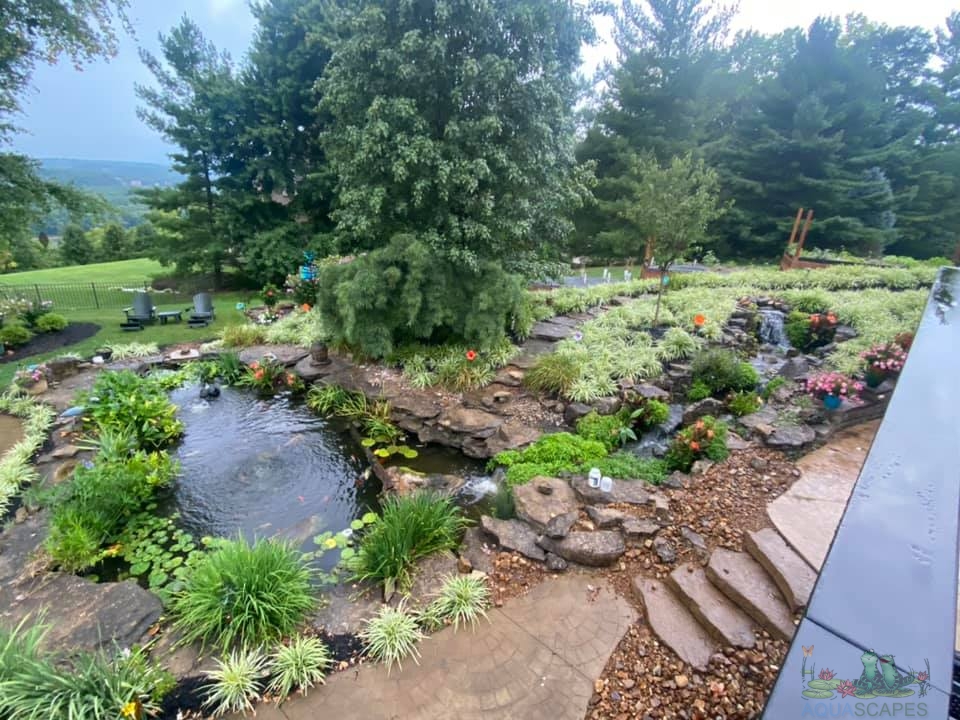10 Aquatic Plants for Mini Ponds
1. Dwarf Water Lettuce
Dwarf water lettuce is a great plant choice for the beginner pond keepers because it grows well in both still and moving bodies of water, can take a wide range of light conditions from low to high, and will grow under many different water depths – as long as it is at least 12 inches deep. It is also one of the few aquatic plants that prefer sun over shade. Although you typically do not need to fertilize your dwarf water lettuce, adding a liquid fertilizer once a week during the growing season will help to promote robust growth. One major downside to this plant is its tendency to be invasive if left unchecked.
Invasive properties aside, dwarf water lettuce does have some benefits. It has been known to help control algae growth, and it provides hiding places for fish and other pond inhabitants.
2. Water Lilies
Water lilies are a staple in any mini pond, and there are many different varieties to choose from. They can grow in a wide range of light conditions, from full sun to partial shade, and can thrive in depths from just a few inches to up to 12 feet deep. Additionally, water lilies come in both tropical and hardy varieties, so you can find the perfect one for your climate. As with dwarf water lettuce, you may want to fertilize your water lily plants occasionally during the growing season for optimal growth.
Water lilies have several benefits beyond simply looking pretty. They provide shade for fish and other pond inhabitants, act as a filter by removing pollutants from the water, and help to control algae growth.
3. Frogbit
Frogbit is a floating plant that can be used in either still or moving water bodies. It does well in both full sun and partial shade and can grow in depths from just a few inches to up to 12 feet deep. Like dwarf water lettuce, frogbit can be invasive if left unchecked.
Benefits of frogbit include its ability to reduce algae growth, provide shade for fish and other pond inhabitants, and serve as a food source for fish.
4. Water Hyacinth
Water hyacinth is another floating plant that does well in both still and moving water bodies. It is able to grow in partial shade to full sun, can thrive in depths from just a few inches to up to 12 feet deep, and does not require fertilization for optimal growth.
This plant offers many benefits, including its ability to reduce algae growth, provide hiding places for fish and other pond inhabitants, act as a filter by removing pollutants from the water supply, and serve as an additional food source for your aquatic friends.
5. Elodea (Anacharis)
Elodea (or Anacharis) is another great plant choice for the beginner pond keeper because it grows quickly with minimal effort on your part. It prefers sunny conditions but will also grow in partial shade; it thrives best in depths of 6 to 12 inches but can also grow in much deeper water. Elodea will survive in both still and moving bodies of water; it is also fairly tolerant of changes in water chemistry, making this plant particularly versatile.
You do not need to fertilize your elodea plants as they are capable of getting most nutrients from the surrounding water itself. However, adding a liquid fertilizer once a week during the growing season will help ensure robust growth.
Elodea provides many benefits to your pond: it reduces algae growth, acts as an additional food source for fish and other pond inhabitants, and provides hiding places for them as well. It can even help you control mosquito populations if left undisturbed around the perimeter edge of the pond (mosquitoes lay their eggs in stagnant water).
6. Submerged Pennywort
Submerged pennywort is a submerged plant that can be used equally well in still or moving bodies of water. It thrives best at a depth of just a few inches, but it will grow as deep as 12 feet if necessary. The submerged pennywort prefers full sunlight but will also grow well with partial shade; although it requires fertilization from time to time during the growing season, you do not need to worry about the surrounding water chemistry because this plant is very tolerant to changes in chemical composition.
The benefits of submerged pennywort include its ability to remove pollutants from the water supply and serve as a food source for fish.
7. Water Milfoil
Water milfoil is another excellent choice for either still or moving water bodies, thriving best in full sunlight but able to grow with partial shade as well; the plant does not need to be fertilized regularly for optimal growth. It can thrive in depths of just a few inches or up to 12 feet deep and has developed an extensive root system that makes it particularly useful at helping to reduce algae growth within the pond.
This plant offers several benefits: it reduces algae growth throughout your pond, provides hiding places for fish and other pond inhabitants, helps filter pollutants from the water supply, and also serves as a food source for your aquatic friends.
8. Banana Plant (Nymphoides)
The banana plant, also known as nymphoides, thrives in water between 6 and 36 inches deep. It does very well in full sun or moderate shade but will grow with only partial sunlight if necessary; this floating aquatic plant will even thrive in waters that are highly polluted. The banana plant provides many benefits to your pond: it reduces algae growth throughout the body of water, acts as an additional food source for fish and other pond inhabitants, helps filter pollutants from the water supply, and serves as a habitat for them as well.
Another added benefit is that this plant will multiply quickly – left undisturbed by digging or uprooting, its underwater rhizomes spread rapidly through your entire pond. If you want to slow down its growth or get rid of it altogether, however, the banana plant is fairly easy to remove without causing too much harm to the rest of your aquatic plants.
9. Water Lettuce
Water lettuce is a floating aquatic plant that does very well in full sun or partial shade; it will grow in water depths up to 12 feet and does not require fertilization for optimal growth. The leaves of this plant provide excellent cover and habitat for fish and other pond inhabitants, and its rapid growth means that you will quickly see an increase in the overall diversity of your pond life.
This plant offers several benefits: it helps reduce algae growth, provides food and cover for fish and other pond inhabitants, helps filter pollutants from the water supply, and is very easy to care for.
10. Parrot’s Feather
The parrot’s feather is a floating aquatic plant that grows best in full sun or partial shade; it will thrive in water depths up to 12 feet and does not require fertilization for optimal growth. This plant is particularly beneficial because it helps reduce algae growth, provides food and cover for fish and other pond inhabitants, helps filter pollutants from the water supply, and is very easy to care for.
Like the banana plant, the parrot’s feather will quickly multiply if left undisturbed – so be prepared for a rapid increase in the overall diversity of your pond life if you choose to include this plant in your mini ecosystem!
Aquatic plants can offer a variety of benefits to your mini pond, including reducing algae growth, providing food and cover for fish and other pond inhabitants, helping filter pollutants from the water supply, and being easy to care for. In this article, we have highlighted 10 excellent aquatic plants that are perfect for mini ponds – so don’t hesitate to add at least one of them to your ecosystem today!
Thanks for reading at Meyer Aquascapes! We hope you’ve enjoyed our post on garden pond design. Please leave a comment below if you liked it or have any questions. We’d love to hear from you! Thanks for stopping by!




 meyer aquascapes
meyer aquascapes